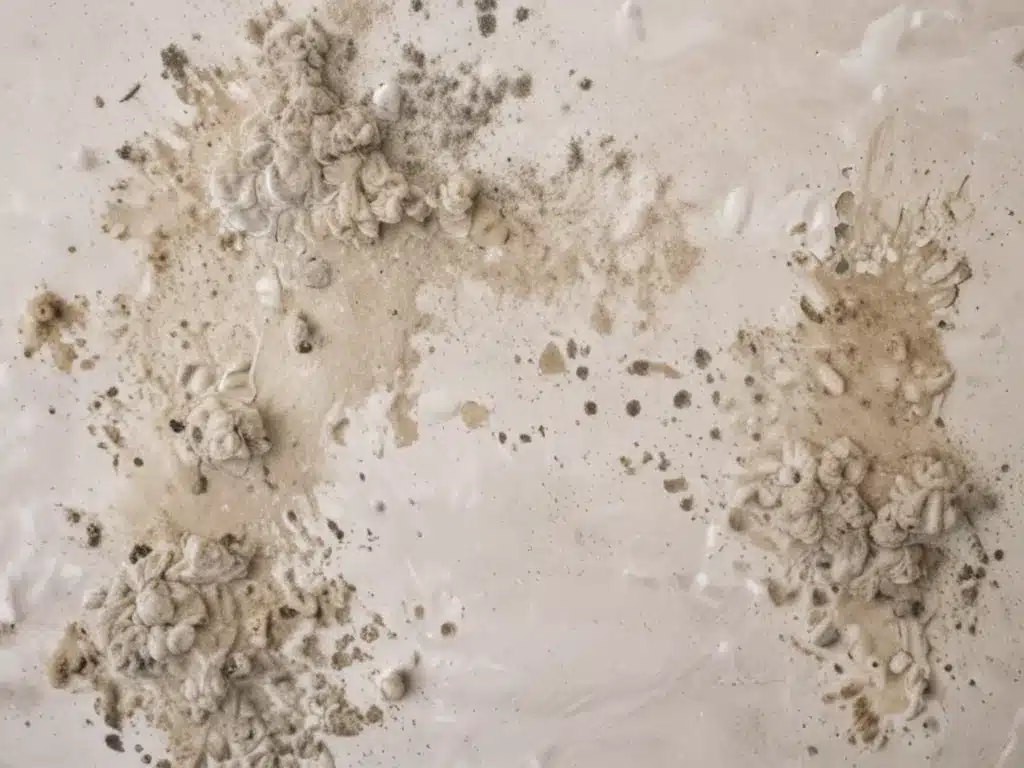Mold can be a nuisance in any home. While bleach is a common cleaning solution, it has some drawbacks. As someone concerned about using harsh chemicals, I explored some safe, natural alternatives to bleach for mold removal.
Why Avoid Bleach for Mold Removal?
Bleach is an effective disinfectant and mold killer. However, it has some significant downsides:
-
Toxic fumes – Bleach releases harsh fumes that can irritate eyes, skin, and respiratory systems. I prefer to avoid these toxic side effects.
-
Damage to materials – Bleach can discolor or degrade fabrics, carpets, wood, and other porous materials. It’s not ideal for finished surfaces.
-
Ineffective long-term – Bleach only removes surface mold. It does not prevent future growth by killing mold roots or spores. The mold often returns.
-
Environmental impact – Bleach contains chlorine, which is toxic and harmful if released into the environment through wastewater. More natural alternatives are better for the planet.
For these reasons, I wanted to find safe, non-toxic alternatives to bleach for mold removal.
Benefits of Natural Mold Removers
Natural mold removers offer many advantages over harsh bleach:
-
Non-toxic – Made from natural ingredients like essential oils, baking soda, vinegar, etc. They don’t release toxic fumes or vapors.
-
Gentle on materials – Natural solutions won’t bleach or degrade surfaces like wood, tile, or fabrics. They’re safe for finished materials.
-
Prevent mold growth – Many natural removers kill mold at the roots and prevent spores from spreading. They provide longer-lasting mold prevention.
-
Environmentally-friendly – Natural ingredients break down safely without polluting waterways. They have a lower environmental impact than bleach.
-
Cost-effective – Common ingredients like vinegar, hydrogen peroxide, etc. are very affordable mold removal solutions.
For all these reasons, natural mold removers are my top choice over harsh bleach products.
Top 6 Natural Mold Removers
Here are my top 6 safe, non-toxic alternatives to bleach for mold removal:
1. White Vinegar
White vinegar is acidic enough to kill mold and prevent future growth.
-
Mix equal parts vinegar and water in a spray bottle. Spray moldy areas, let sit 15 minutes, then scrub and rinse.
-
For laundry, add 1 cup vinegar to a load to kill mold and mildew.
2. Hydrogen Peroxide
Hydrogen peroxide breaks down mold cell walls on contact.
-
Use 3% solution. Apply directly to mold. Let sit 10 minutes before scrubbing and rinsing.
-
Combine with baking soda for added scrubbing power.
3. Baking Soda
Baking soda is a mild abrasive that scrubs away mold.
-
Make a paste with water and apply to moldy surfaces. Let sit for 1 hour before scrubbing and rinsing.
-
Combine with vinegar or hydrogen peroxide for added mold-killing power.
4. Tea Tree Oil
Tea tree oil is a natural fungicide and inhibits mold growth.
-
Add 20 drops of tea tree oil to a spray bottle filled with 2 cups water. Shake well and spray on moldy areas.
-
Do not ingest tea tree oil. Use protective gloves when applying.
5. Borax
Borax destroys mold by breaking down cell walls.
-
Make a borax cleaning paste with equal parts borax and hot water. Apply to moldy surfaces, let dry completely, then vacuum up.
-
Can also add 1/2 cup borax to laundry to kill mold and mildew.
6. White Distilled Vinegar
Like white vinegar, distilled white vinegar kills mold and prevents future growth.
-
Use full-strength or mix with equal parts water and apply to mold with a spray bottle. Scrub after 15 minutes contact time.
-
Add 1 cup to laundry loads to kill mold and mildew on fabrics.
Tips for Using Natural Mold Removers
To effectively and safely use natural mold removers:
-
Always test on a small, inconspicuous area first to check for any discoloration of the surface material.
-
Make sure the area is well-ventilated and wear gloves and goggles for protection.
-
Rinse surfaces thoroughly after application and scrubbing to remove all mold and cleaning solution residues.
-
Dry surfaces completely to discourage future mold growth. Consider investing in a dehumidifier to keep humidity levels low.
-
Dispose of any sponges, brushes, rags or cleaning equipment used to remove mold. They can harbor mold spores.
-
For heavy mold infestation, consider hiring a professional mold remediation company. Do not attempt to remove large areas yourself.
Conclusion
For removing household mold, natural solutions like vinegar, peroxide and essential oils are excellent alternatives to toxic bleach. They effectively kill and remove existing mold while preventing regrowth. Plus, they are gentle on surfaces and have minimal environmental impact. With proper safety precautions, these natural mold removers can safely tackle mold problems around the home.







